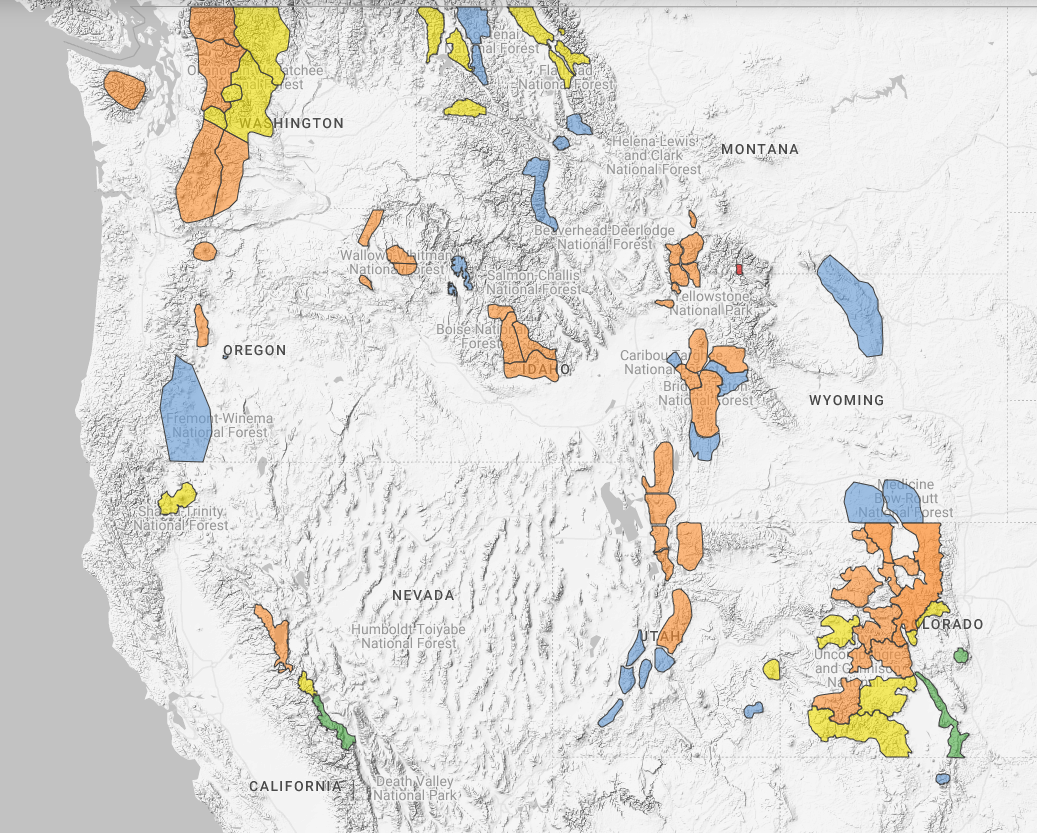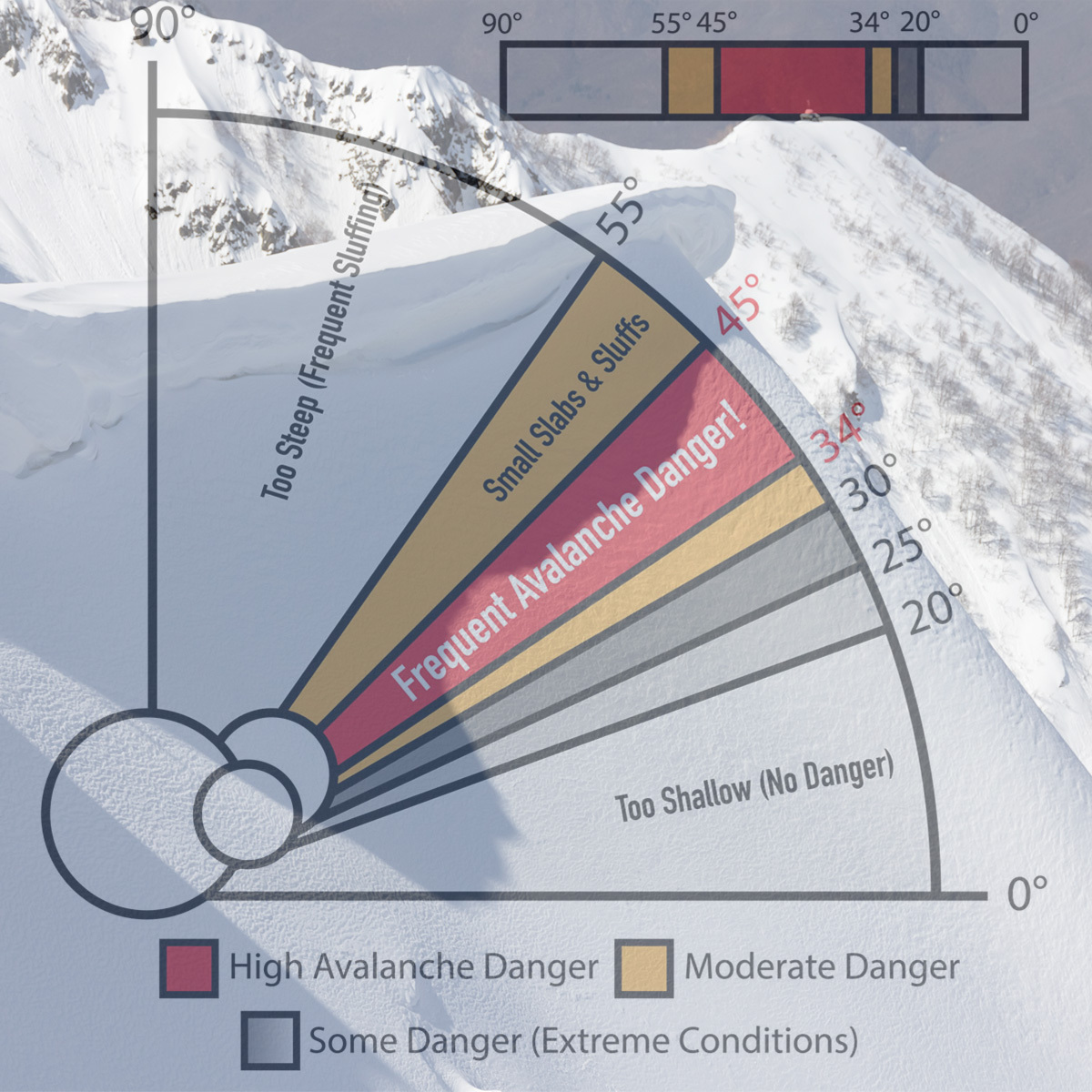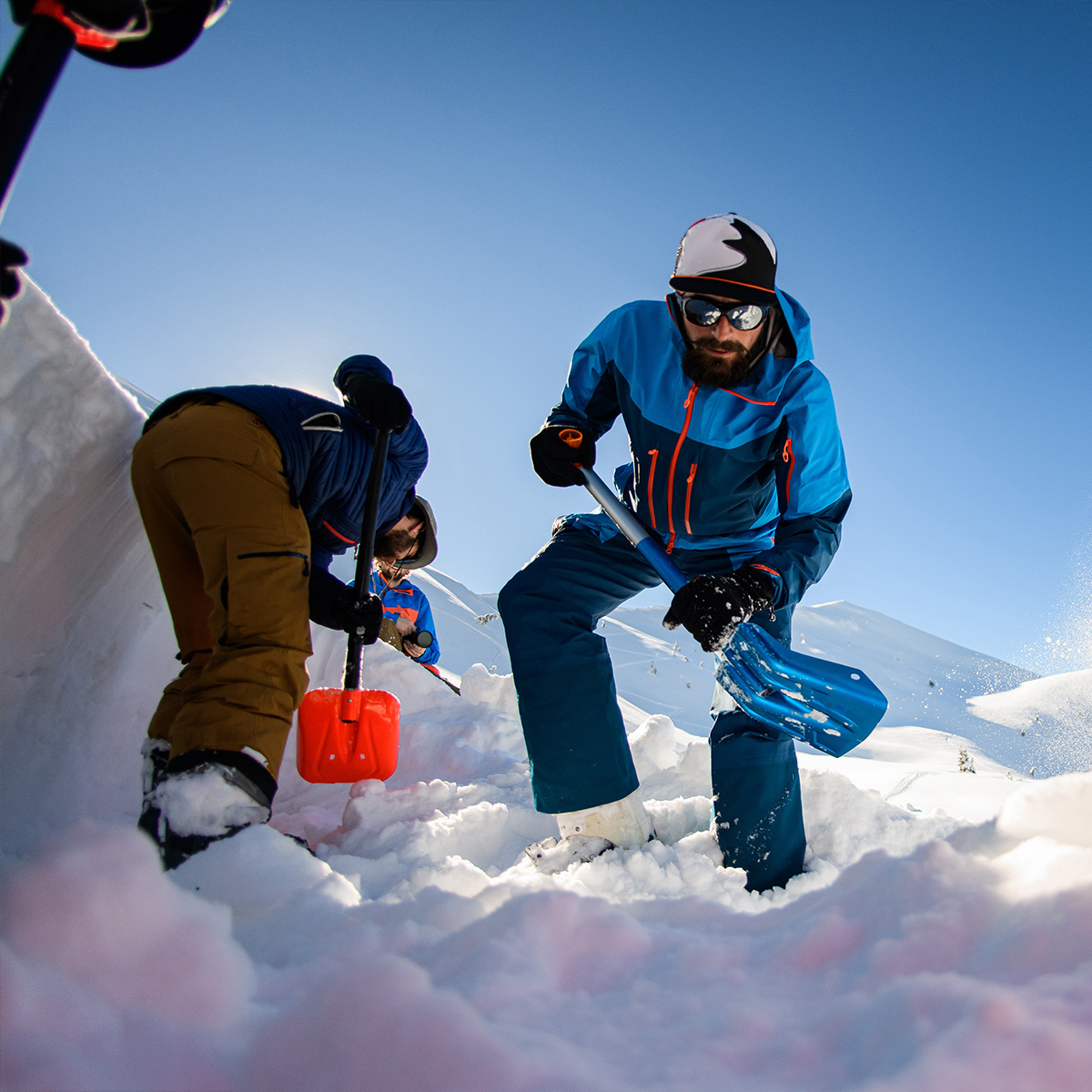Your cart is empty
January 6, 2025
Why Avalanche Safety Matter
In the backcountry, ignorance isn't bliss—it's a gamble. Thousands venture into snowy mountain terrain every winter, chasing fresh powder, an adrenaline high, and breathtaking views—some never return. It is estimated that avalanches claim the lives of nearly *150 people globally each year. Perhaps this number seems small compared to the thousands of skiers, snowboarders, and sledders anticipated to hit the slopes this season. Yet, for the families and communities affected by each loss, the impact is significant. Avalanche fatalities are preventable tragedies, given the right knowledge, preparation, experience, and equipment. Avalanche safety is not just precautionary—it's a responsibility that could save your life and the lives of your riding team. This year, Reduce the gamble by learning why avalanche safety matters and how to protect yourself and those around you.
Understanding The Risk

Avalanches don't discriminate; they affect skiers and snowboarders, snowmobilers, hikers and climbers, the inexperienced and the experienced. †The U.S. National Avalanche Center reported 16 fatalities last year alone (2023-2024 Season). The primary regions of concern are the Rocky Mountains in the Mountain West of the United States and the European Alps; however, any region with avalanche terrain carries the potential for tragedy. Recognizing avalanche terrain and potential triggers is key to understanding avalanche risks.
What is Avalanche Terrain?
Avalanche terrain typically includes slopes between 30 and 45 degrees with significant snow accumulation (via precipitation or wind), areas immediately beneath and to the sides of these slopes, and runout zones where avalanches are likely to deposit debris. These areas are especially dangerous during or shortly after heavy snowfall or rain, rapid temperature change, or strong winds that redistribute load. Terrain features such as open slopes (lacking in trees and stones), gullies, and lakes can amplify avalanche risk by channeling the flow of snow and increasing its speed, force, and burial depth. Recognizing these characteristics is crucial for avoiding high-risk zones and planning safer routes through the backcountry.

What Triggers Avalanches?
Potential triggers fall into two primary categories: natural and human-triggered slides. Natural triggers include increased load through heavy snowfall, rain, and wind deposits; rapid warming and temperature change; and rotting/old snow—snow that has weakened over time due to prolonged exposure to temperature fluctuations, drying, and icing. Human-triggered slides are caused by activities that disrupt a snowpack's load balance. A slight increase in weight from a skier, snowboarder, snowmobiler, or even hiker can be enough to trigger a slide.
While certain warning signs—like recent slides, visible cracks, or hollow sounds—can indicate immediate danger, avalanches often strike without notice. The uncertainty faced in the backcountry gives reason for understanding and respecting avalanche terrain and triggers—a critical skill needed by all who travel in the snowy mountains.
The Consequences of Ignoring Avalanche Safety
Failure to prioritize avalanche safety both individually and as a group can lead to devastating outcomes. These consequences affect not only the individuals involved but also riding companions, rescuers, loved ones, and communities. The significance of an avalanche accident extends far past the day and place it occurs and brings a mix of physical, emotional, and financial repercussions.
1. Physical Dangers — An avalanche is an incredible force of nature that leaves little room for survival if caught unprepared. The intense pressure of moving snow can bury individuals in a concrete-like cacoon within seconds, causing suffocation, trauma, or hypothermia. For those lucky enough to survive, injuries such as broken bones, frostbite, and long-term medical complications are common. Urgent rescue is critical, as survival is unlikely after the first 15 minutes of burial.
2. Emotional Impact — The emotional toll of an avalanche is profound and not to be dismissed. Fellow riders, families, and friends of the victim face unimaginable grief, compounded by the knowledge that the tragedy may have been preventable. Survivors, rescuers, and riding mates often experience psychological trauma, including guilt, anxiety, and post-traumatic stress disorder (PTSD), especially if others in the group were lost.
3. Impact on Others — When individuals ignore avalanche safety, the risks extend to rescuers and companions. Backcountry rescue operations are incredibly dangerous, putting rescuers at risk of being caught in secondary slides. Responders must also navigate unstable terrain and adverse conditions to reach victims. Neglecting safety protocols can put an entire group at risk.
4. Financial Costs — The financial burden of an avalanche incident can be overwhelming. Search and rescue efforts often involve specialized equipment, helicopters, and trained personnel, leading to significant costs that insurance may not cover. Additionally, victims may face medical bills, lost gear, and missed work, creating long-term financial strain.
5. Long-Term Consequences — The consequences of a single accident can extend far past one trip into the backcountry. As mentioned, neglecting avalanche safety can result in long-term physical, emotional, and financial repercussions. The lasting effects of a slide can leave riders feeling less confident and hesitant to return to the mountains, robbing them of the joy and adventure they once cherished.
Thus, the consequences of disregarding avalanche safety measures can be severe and far-reaching. By taking the appropriate time to prepare, carrying the proper equipment, and gaining the necessary knowledge, you can avoid these outcomes and ensure that your backcountry adventures remain unforgettable for the right reasons.
The Role of Avalanche Safety
Avalanche safety is more than just precautionary—it is a critical practice that saves lives. Whether you are an experienced backcountry rider or new to winter sports, understanding and implementing avalanche safety measures is essential to minimizing risk and ensuring that your time in the mountains is thrilling and secure.
1. Education as a Foundation — The first step in avalanche safety and training is education. Attending avalanche safety courses or workshops can provide the knowledge necessary to recognize hazardous conditions, understand snowpack stability, and navigate avalanche-prone terrain.
2. Essential Safety Gear — Carrying the right equipment is non-negotiable in the backcountry. A properly functioning avalanche beacon, probe, and shovel are the minimum essentials for any trip. More advanced tools, like avalanche airbags, can significantly increase survival chances in the event of a slide. However, great gear isn't enough—you must know how to use it effectively. Regular practice ensures that you can respond quickly and confidently in an emergency.
3. Risk Assessment and Decision-Making — Avalanche safety empowers you to make informed decisions about where to travel and when to turn back. By learning how to assess terrain, weather conditions, and snowpack stability, you can reduce your exposure to dangerous situations. Tools like avalanche forecasts and terrain maps are invaluable for planning your route and identifying high-risk zones to avoid.
4. The Importance of Teamwork — Avalanche safety isn't just an individual responsibility—it's a collective effort. Traveling with a group that shares your commitment to safety enhances your chances of avoiding danger. Effective communication, mutual vigilance, and coordinated use of safety gear are essential components of any backcountry trip. A well-prepared team can prevent a bad situation from becoming worse.
5. Prevention Over Rescue — The ultimate goal of avalanche safety is to avoid being caught in a slide in the first place. While rescue skills and essential gear are crucial, prevention is far more effective. By recognizing warning signs, staying informed about conditions, and adhering to best practices, you can significantly lower the chances of an avalanche incident.
Avalanche safety plays a vital role in backcountry preparedness, turning potential dangers into manageable risks. Through education, preparation, and teamwork, you can explore snowy mountain terrain with confidence and peace of mind, knowing you're equipped to handle nature's challenges.
How to Get Started with Avalanche Safety

Taking your first steps toward avalanche safety preparedness can feel daunting, but with the right approach, it proves both manageable and rewarding. Whether you're new to backcountry travel or looking to enhance your skills, this guide will help you lay a solid foundation for safer adventures.
1. Educate Yourself — Knowledge is your most valuable tool in avalanche safety. Start by taking an introductory avalanche safety course, such as an AIARE Level 1 class or a similar program offered in your region. These courses cover critical topics like recognizing avalanche terrain, assessing snowpack stability, and understanding weather conditions. Many also include hands-on practice with essential safety gear.
Resources to Explore:
- Local Ski Shops and Ski Resorts Often Host Classes
- Online platforms like the U.S. National Avalanche Center, Avalanche Canada Website, and the European Avalanche Warning Services offer free educational resources.
2. Invest in Essential Gear — Every backcountry adventurer should carry a minimum of three essential tools:
- Avalanche Beacon — A device that helps rescuers locate you—or you locate others—in the event of a burial.
- Avalanche Probe — Used to pinpoint a buried person's location after the beacon signals their position.
- Avalanche Shovel — Necessary for quickly digging someone out of the snow.
Additionally, other gear may be considered, such as an avalanche airbag pack, snow saw, backcountry radio, and satellite phone. Ensure you purchase high-quality equipment and familiarize yourself with its operation before heading into the backcountry.
3. Practice, Practice, Practice — Having the right gear isn't enough—you need to know how to use it. Regularly practice beacon searches, probing techniques, and digging skills. Simulate rescue scenarios with your group to ensure everyone understands their role in an emergency.
4. Stay Informed — Stay up to date on avalanche conditions in your area by checking daily avalanche forecasts from trusted sources like Avalanche.org or local avalanche centers. These reports provide crucial information about weather, snowpack, and avalanche risks. Combine this information with your knowledge to make informed decisions about your route and timing.
5. Plan Your Routes Carefully — Learn to recognize avalanche terrain and use tools like topographic maps and GPS apps to plan routes that minimize exposure to danger. Avoid slopes with steep angles (30–45 degrees) during high-risk conditions and always have an escape plan in case conditions worsen.
6. Travel with a Prepared Group — Always venture into the backcountry with a group that shares your commitment to safety. Discuss plans in advance, set clear roles for each member, and ensure everyone carries the necessary gear. Effective communication and teamwork are essential for reducing risks and responding to emergencies.
7. Start Small and Build Experience — Begin your backcountry adventures in areas with low avalanche risk and gradually expand your skills and experience. Seek mentorship from experienced adventurers or join local backcountry groups to learn from their expertise.
8. Make Safety a Habit — Commit to ongoing education and training to stay sharp. Conditions in the backcountry are always changing, and staying prepared requires constant vigilance. Regularly review your skills, test your gear, and refresh your knowledge by taking advanced courses.
Getting started with avalanche safety is a commitment to yourself, your companions, and everyone who shares the backcountry with you. By taking these steps, you can confidently approach each adventure, knowing you're prepared for whatever the mountains may bring.
Avalanche safety is as much a mindset as it is a set of rules and precautions. Each decision you make, from your routes to your gear selection, could be the difference between a safe adventure and a preventable tragedy. With more and more riders entering the backcountry every year, the stakes have never been higher, but so are the opportunities to make a difference through education, preparation, and responsible behavior in the backcountry.
By recognizing avalanche terrain, understanding triggers, and carrying essential safety gear, you can significantly reduce your risk and increase your ability to respond in an emergency. Backcountry travel is a collective effort; by prioritizing safety and working together, you protect not only yourself but also your companions and the rescuers who might otherwise be called into harm's way.
Backcountry adventures provide incredible thrills and unparalleled views, but not without demanding respect for Mother Nature's awesome power. Riders must take adequate time to research and prepare for each journey to ensure their trip is unforgettable and safe. This year, commit to making avalanche safety a priority and encourage others to do the same—because the best adventures are the ones you return from.
